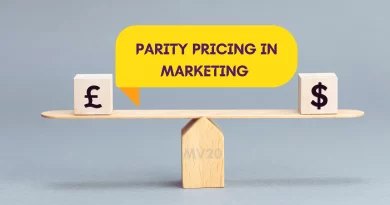Captive Product Pricing In Marketing [Razor and Blade Example]
When it comes to pricing your products, there are a lot of different strategies to consider. But have you ever heard of captive product pricing?
It’s a pricing strategy that involves selling one core product and multiple accessory products. And it’s a strategy that can be incredibly effective if done right. We shall look into more in detail of this strategy along with examples. So stay tuned!
What is Captive Product Pricing?
Captive product pricing is a strategy that focuses on selling a core product, often at a lower price, and then selling additional, complementary products at a higher price.
The idea is that by offering a variety of related products at different price points, you can increase sales and profits.
For example, let’s say you’re selling a camera. The camera itself might be priced at $300, but you also offer a variety of accessories like lenses, tripods, and camera bags at different price points.
Customers might be more likely to buy the camera if they can also purchase the accessories they need at the same time.
Benefits of Captive Product Pricing
Increased Sales
By offering a variety of related products at different price points, you can increase the number of products sold. Customers are more likely to buy more products if they can purchase them all at the same time, rather than having to go to different stores or websites.
Higher Profits
With captive product pricing, you can charge a higher price for the accessories than you would if you were selling them separately. This can lead to higher profits overall.
Brand Loyalty
When customers purchase a core product and accessories, they are more likely to return to your store or website to make future purchases. Customers’ confidence in the brand and their willingness to buy again may both rise as a result.
Cost Savings
By bundling products together, you can save on marketing and distribution costs.
Examples of Captive Product Pricing
Apple
Apple is a master of captive product pricing. They sell a variety of products such as the iPhone, iPad, and Mac computers. Each product comes with a variety of accessories such as cases, chargers, and headphones.
Car Dealerships
Car dealerships often use captive product pricing by offering financing and insurance options along with the purchase of a new car.
Amazon
Amazon uses captive product pricing by offering a variety of related products at different price points. They often show related products at the bottom of a product page, encouraging customers to purchase more than just one item.
Razor And Blade Example
One example of captive product pricing is the razor and blade model.
You might have heard of companies like Gillette or Schick that sell razors at a relatively low price and then make the bulk of their profits on the sale of replacement blades. The razor itself is the “core” product, while the blades are the “captive” products.
Customers are more likely to buy the razor at a lower price because they know they will need to replace the blades eventually. And once they’ve invested in the razor, they are more likely to continue purchasing blades from the same company in the future.
This creates a steady stream of revenue for the company, as customers continue to purchase blades on a regular basis.
Another example can be, a company that sells a printer at a low price and then charges a premium for the ink cartridges.
This is a common strategy in the technology industry, as companies know that customers will need to purchase replacement parts or accessories eventually.
So by using this strategy, the company can attract customers with a low-priced core product, and then make up for it by charging a higher price for the captive products. This creates a win-win situation for both the company and the customer.
Tips for Successful Captive Product Pricing
Keep it simple
Don’t offer too many options or it can be overwhelming for customers. Keep the number of products and accessories limited to a manageable number.
Quality over Quantity
The accessories and products you offer should complement the core product and add value to the customer’s experience.
Be transparent
Be upfront about the prices and make sure that it’s clear what is included in each bundle.
Final Thoughts!
So as you see captive product pricing is indeed a smart strategy and can help you make some banks without much effort!
I hope this article helped you to understand captive product pricing and how to use it effectively in your business. Let me know if there any confusions with respect to this strategy!
Make sure to read:




